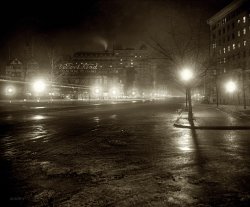
MAY CONTAIN NUTS

Search Shorpy
SHORPY ART

Framed or unframed, desk size to sofa size, printed by us in Arizona and Alabama since 2007. Explore now.
Join and Share
Ad-Free Shorpy
Shorpy is funded by you. Patreon contributors get an ad-free experience.
Learn more.

Recent comments
- Side Winder
- Air Quality?
- Sojourner Truth riot
- None were so blind(ed)
- The less famous sister
- Good ol' days?
- Rise and Fall
- Goo Goo Ga Joob
- Ticket Retention
- Not the only one
- Vagaries of War
- Killed by Amtrak
- Back to the Future
- Wanted --
- If you can't stand the light
- Centralized Traffic Control, I believe
- What's really happening
- Heckuva remote control!
- Sometimes — Things Go Bump!
- I SEE THE LIGHT
- Union Switch and Signal Company
- Get That Light Out Of My Eyes
- Eggs. Eggs. Eggs. The Egg Man is Here!
- Foreboding caption
- Famous Hollywood faces
- Not just S&P
- re: Those things in the jar
- Up In Smoke
- Medical Smoking
- Quick fix
Member Photos
The Shorpy
Print Emporium
Print Emporium
Search Shorpy
Search results -- 30 results per page
- Zip It Garage: 1919
- ... Stearnses were built as quality cars from the get-go. In 1911, Stearns became the first US manufacturer to feature the Knight Sleeve ... Posted by Dave - 09/11/2011 - 4:24pm -
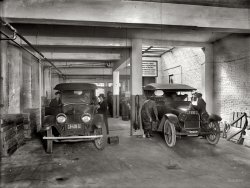
- Message From Mars: 1913
- ... Flaming Arrow film mentioned previously was released in 1911. A film with the same title was made and released in 1913 by the Bison ... Posted by Dave - 10/13/2012 - 9:24am -
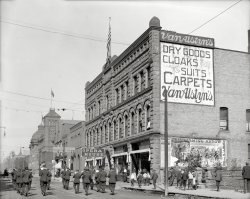
- Carnival of Soles: 1935
- ... rubber.
Wallace entered Government service in 1911 with the United States Bureau of Mines where he remained for nine years ... Posted by Dave - 05/23/2014 - 6:06pm -
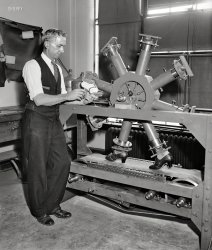
- Coney Island Mardi Gras: 1908
- ... - Dave]
1906:
1909:
1911:
An Affront The word "affronted" in the bottom of the ... Posted by Dave - 08/19/2012 - 4:49pm -
![Coney Island Mardi Gras: 1908 "Coney Island Mardi Gras 1908." Some interesting signs in this one. 8x10 glass negative, George Grantham Bain Collection. View full size.
Chop Suey and German BeerAnd Moxie! Great stuff. There was apparently a "Mardi Gras Hotel" in Coney Island. Who knew?
Sale of confetti stopped!!!Looks like the celebration two years earlier got a little out of hand.
[The curse of rowdyism! Not to mention its handmaidens-in-horseplay, boisterousness and hooliganism. Click the clippings to enlarge. - Dave]
1906:
1909:
1911:
An AffrontThe word "affronted" in the bottom of the newpaper articles (thank you Vic)... Just love that word, don't know if I've ever used it in a sentence but am certainly intrigued by the possibility. Plus the idea of "affronting" a woman has got my imagination going overtime.
Sigh, the perils of way too much time on one's hands.
(The Gallery, Cars, Trucks, Buses, Coney Island, G.G. Bain)](https://www.shorpy.com/files/images/01505u.thumbnail.jpg)
- The Picture Gallery: 1910
- ... The New York Public Library published a guide in 1911: Catalogue of Paintings in the Picture Galleries . This lists several ... Posted by Dave - 07/26/2012 - 12:34pm -
![The Picture Gallery: 1910 Circa 1910. "The Picture Gallery, New York Public Library." Please, no talking while we gaze upon the Art. Detroit Publishing glass negative. View full size.
Stalls to prevent art damageInteresting the little "stalls" they have set up on the outside walls so that one needs to approach the art from the front and cannot walk along the wall (and possibly brush against a painting, damaging it). I'm no great art aficionado, but I've been to a number of museums over the years and don't recall seeing this before... maybe for an isolated work, but not along the whole lengths of walls.
Are the use of stalls to prevent walking along the walls still practiced?
[This is a continuous railing. Not "stalls." - Dave]
Gorgeous!That big expanse of floor is just begging to be danced upon.
Catalogue of NYPL PaintingsThe New York Public Library published a guide in 1911: Catalogue of Paintings in the Picture Galleries. This lists several Gilbert Stuart paintings on display in the General Gallery including two paintings of George Washington; neither is the "Landsdowne Portrait." The large full length portrait visible here was painted for Peter Jay Munro and is now referred to as the Munro-Lenox Portrait. It was auctioned off by the library in 2004 and is now in private hands.
The large painting on the far wall is Mihály Munkácsy’s The Blind Milton Dictating 'Paradise Lost' to His Daughters.
SymmetryWhoever arranged the paintings seems to have had an eye for symmetry. Note the size of the pieces, as well as the 2 portraits, one facing right, the other to the left.
"Lansdowne Portrait"Is that Gilbert Stuart's "Lansdowne Portrait," 1796, on the left wall?
NYPL GalleryIs this gallery still there? What is it called?
Salomon Exhibition RoomThis is the Edna Barnes Salomon Exhibition Room, on the same floor as the Main Reading Room. It still serves as exhibition space.
(The Gallery, DPC, NYC)](https://www.shorpy.com/files/images/4a24346u.thumbnail.jpg)
- Cabinet children: 1922
- ... Hays married in 1910, Davies in 1914, and Denby in (IIRC) 1911, and all married younger women.
That little girl on the left That ... Posted by Ken - 08/31/2012 - 3:51pm -
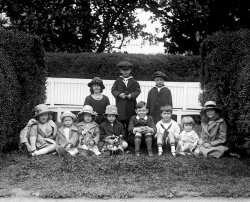
- Clicquot Club: 1913
- ... are the Montana peak-style campaign hats, introduced in 1911. The canvas style leggings are the M1907 mounted.
By 1913, the year ... Posted by Dave - 08/27/2012 - 1:17pm -
![Clicquot Club: 1913 "Boy Scouts, 1913." Harris & Ewing Collection glass negative. View full size.
Uniforms and accoutermentsThe blouses (or tunics) appear to be the M1909 spec. 1038 style with the billow pockets. Some of the hats are the Montana peak-style campaign hats, introduced in 1911. The canvas style leggings are the M1907 mounted.
By 1913, the year this photo was taken, the M1912 had become the standard military uniform. The M1912, M1917, and M1918 would all serve through the Great War. The M1910 leggings, and both wool and leather puttees would become standard. The campaign hat would remain in service through 1916, but most would not travel with the doughboys to Europe due to the bulk packing necessary to preserve its shape while being shipped.
As near as I can tell from the photo, the epulates [epaulets] have been removed from each uniform, which is how they were demilled for civilian use.
Boy Scout ranksThe boy on the far right has the scroll of a second class scout on his left sleeve. The third boy from the left appears to have the fleur-de-lis of a tenderfoot on his left pocket flap. The tall boy with the white shirt open at the throat also appears to have a rank on his coat pocket, but I can't make it out. Can we get a closeup?
Scout CoutureLove those garden-gnome hats.
Scout Uniforms, Cont'dIn response to the observations made by the US Victory Museum, the uniforms worn by these boys were manufactured specifically for the Scouts starting in 1910 by Sigmund Eisner Co. of Red Bank, N.J. Although Eisner also manufactured for the military, these were not made-over uniforms, never had epaulets, and were stamped and labeled on the inside of the garment with the Boy Scout seal. The hat, based on the "boss of the plains" design, was manufactured and labeled for the Scouts also starting in 1910. This was the official headwear of the Scouts until 1948, when it was replaced by the garrison cap (which had been used from the early 1940's as alternate headwear). The Scouts did make use of the military M1907 leggings until about 1915, when they changed to the "improved" canvas leggings with a single zigzag lace in the front, and woolen puttees and finally long socks.
(The Gallery, Boy Scouts, Harris + Ewing)](https://www.shorpy.com/files/images/03139a.thumbnail.jpg)
- Duct Soup: 1908
- ... "crowd poison" theory increasingly fell from favor after 1911, according to Chapter Three of Air Conditioning America by Gail ... Posted by Dave - 07/17/2013 - 6:33am -
![Duct Soup: 1908 Circa 1908. "The galley. Steamer City of Cleveland, Detroit & Cleveland Navigation Co." 8x10 inch glass negative, Detroit Publishing Co. View full size.
It Took Some Time to Sink InAfter a week had passed, the galley crew finally realized that no matter how stolidly they worked, they were never going to be given any actual food to prepare.
Dave is . . .KING OF THE KAPTIONS - sometimes I can be a bit obtuse, but I did manage to get this one.
Crowd poisonThis ship's ventilation system may be oversized by modern standards. In the mid-19th century, carbon dioxide was proven non-toxic to humans, but experts remained wedded to the idea that we were exhaling some unknown toxin which made rooms with large numbers of people dangerous or unhealthful. This led to code requirements of 30 cfm per person of outside air, a staggering requirement by today's standards, making heating and cooling inefficient.
I don't know if these practices made their way into marine engineering, but I presume they did. In any case, a galley would have different requirements.
The "crowd poison" theory increasingly fell from favor after 1911, according to Chapter Three of Air Conditioning America by Gail Cooper.
Scrapped in 1956Click here for a short article and photo about the City of Cleveland III from the website of the Marine Historical Society of Detroit.
IceThe small door at the rear of the butchers table appears to be for ice input. Got to keep the Buffalo steaks, or Detroit sausages, or whatever cold.
[Close-up. -tterrace]
AnimatronicsIf you can find the slot for your token, they will all spring into action.
Coveting the cookwareI'll bet if you could find those pots and pans, they would still have plenty of use in them! I'd love to know what they used that huge, well designed, copper kettle for!
(The Gallery, Boats & Bridges, DPC, Kitchens etc.)](https://www.shorpy.com/files/images/SHORPY_4a15987a.thumbnail.jpg)
- Tin and Bones: 1920
- ... from Palmer's Views of Buffalo Past and Present, copyright 1911
Unusual drive The differential at the rear axle is oriented so that ... Posted by Dave - 05/13/2015 - 4:18am -
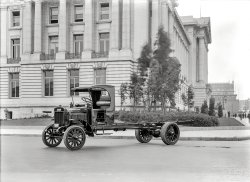
- Something Wicker: 1912
- ... was replaced by the Vice President, William A. Secord. In 1911, James Pringle came aboard as VP, joining the company's long-time ... Posted by Dave - 07/29/2012 - 6:09pm -
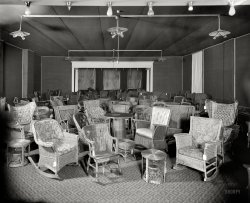
- Union Garage: 1924
- ... the federal government. Congressional investigations in 1911 revealed that the government was being ripped off by exorbitant rent for ... Posted by Dave - 09/12/2011 - 12:06pm -
![Union Garage: 1924 Washington circa 1924. "Union Garage." The Union Building on G Street, venue for the 1917 Auto Show. In July 1917 it was taken over by the Semmes Motor Company, offering 24-hour repair service as well as showrooms for Dodge and Hudson cars. National Photo Company glass negative. View full size.
Union BuildingWow, so much to see in this photo. I love the old skyline shots.
The Union Building was erected in 1892-93 at the suggestion of the Postmaster General, who wanted space for a new city post office. It was initially run by a private company and rented to the federal government. Congressional investigations in 1911 revealed that the government was being ripped off by exorbitant rent for the building and suggested this might be due to political connections of the buildings owners. Converted to garage in 1915 and purchased by Semmes Motor Company in 1919. The address range seems to be 613-621 G street.
Elsewhere on Shorpy: The interior is also seen in this photo of the Semmes service department. Also an article on Semmes plans to update the building as a "modern" service station.
And that rhymes with "P"How convenient - you can play a game of pool next door while you're waiting for your flivver to be fixed!
Market BuildingIs that the old market building, later the wax museum in the Mount Vernon triangle, peeking up above the garage in the background?
[You mean the Liberty Market at Fifth and K? Yes it is. - Dave]
Union Garage: 1924What cemetery is that in the background, and what's the huge building far away with the colonial tower?
[I see a lot of tents in the background. Maybe Camp Meigs. I'm not sure about a cemetery. - Dave]
Adverti$ingThomas Cusack was quite the entrepreneur. Started in 1875, with nothing but a paintbrush and ambition, and now the company is worth $26 million.
Verizon HorizonThis whole block is now the Verizon Center, where the Washington Wizards and Capitals play. On the right is my church, St. Mary's. It used to serve the German Catholic Population in Washington. It was still a German-speaking parish when this photo was taken. The building immediately to the right of the church is the old school and to the left is the rectory. I believe the domed building behind and just to the left of the Union Building (partially obscured) is the historic 6th and I synagogue. Most everything else is gone.
(The Gallery, Cars, Trucks, Buses, D.C., Natl Photo)](https://www.shorpy.com/files/images/31909u.thumbnail.jpg)
- Topside: 1912
- ... sidewheel steamer in the world:
Launched Oct. 7, 1911. 600 staterooms; speed of 23mph.
Trial run May 30, 1912. Collision with ... Posted by Dave - 02/07/2013 - 2:09pm -
![Topside: 1912 Circa 1912. "Steamer City of Detroit III, hurricane deck." Note the partly submerged wreck at left. The D-III was one of the largest sidewheelers on the Great Lakes. 8x10 inch glass negative, Detroit Publishing. View full size.
Mystery Wreck SolvedIt is the steam screw Joseph C. Suit, built 1884, 318 gross tons. On May 30, 1912, the vessel collided with CITY OF DETROIT III, which was leaving the shipyard at foot of Orleans Street on sea trials on Windsor side of the Detroit River, and became a total loss. 11 persons on board; no lives lost. The vessel was later blown up to remove the wreck.
The City of Detroit III, designed by Frank E. Kirby, was the largest sidewheel steamer in the world:
Launched Oct. 7, 1911. 600 staterooms; speed of 23mph.
Trial run May 30, 1912. Collision with JOSEPH C. SUIT, sinking her on the Detroit River.
Maiden voyage June 26, 1912. Detroit to Buffalo.
Sources: Loss of American Vessels Reported during 1913; Merchant Vessel List of the United States, 1889.
Lifeboat numbersWere they odd/port, even/starboard?
What a ship!! 477 staterooms, 21 parlors, and a cocktail lounge/wine cellar that cost nealry a quarter of her total. Compare that to flying economy on Southwest.
Collision just happened?So, based on DrDetroit's post, was this picture taken immediately after the collision? If so, wow!
The paint on the deck seems too worn for this picture to have been taken on its trial run, although maybe it got worn simply from being outfitted, etc., and was scheduled to receive another coat prior to the maiden voyage.
Sign me up DaveSign me up for the maiden voyage in the Shorpy time machine.
What a great time to be had walking on these decks and later walking the NYC streets of the early twentieth century.
Joseph C. Suit?Comparing the photographs, it is clear that the sunken vessel is not the same ship as the image posted in the comments. The bridge on the sunken ship is smaller, the funnel is in not in the same place (or level) the front mast is not the same, and there is a deck below the bridge on the sunken ship with openings (dark in image) that does not exist on the comments photograph. Also. the upper deck overhangs the lower deck.
[Boats change. Wooden pilot houses and decks get rebuilt; boilers, funnels and masts get replaced. No doubt the Suit went through a number of alterations -- the vessel was almost 30 years old when it wrecked. - Dave]
It is the Joseph C. SuitHere is a snapshot taken from the deck of the City of Detroit III, just after the incident on 30 May 1912. The Suit had been rebuilt no fewer than four times during its life.
(The Gallery, Boats & Bridges, Detroit Photos, DPC)](https://www.shorpy.com/files/images/SHORPY_4a16206a.thumbnail.jpg)
- Tecumseh: 1916
- ... reports of the Secretary of the Navy for both 1910 and 1911 indicate that she was active at the Washington Navy Yard. In any case, she was decommissioned on 1 July 1911. Her second decommissioning was probably a result of her sinking which ... Posted by Dave - 08/28/2012 - 1:02pm -
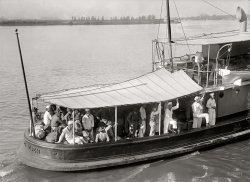
- Modern Motorist: 1908
- ... who would later go on to win the first Indianapolis 500 in 1911. He was also the first person to be presented the Warner-Schebler trophy ... Posted by Dave - 01/19/2013 - 6:16pm -
![Modern Motorist: 1908 Washington, D.C., or vicinity circa 1908. "Mrs. John E. Harris." At the wheel of a shiny new Jackson. Harris & Ewing Collection glass negative. View full size.
Well not *too* shinyA fair bit of mud on the inside of the fender, though I suppose it was unavoidable given the roads of the time. By the way, I suspect that Mrs. Harris wasn't actually driving the car, but just posing for the photographer. None of her clothes are being buffeted by the wind and her posture seems rather contrived.
I thought she looked familiar....
Patched Tire?Maybe not so new considering the condition of the tires. Great pic though.
Count 'emEach tire/wheel has four "stems" projecting inward. One looks like a standard stem for filling the tire with air. The other three are different from the first, but they look alike. Any idea what they were used for?
[They're rim clamps. -Dave]
Re: Count 'emThere are five "stem-like" projections on each wheel. One of them (e.g., the one at about 1:00 on the right front wheel) is the air valve stem. The four that are spaced at 90 degrees around the wheel are "staybolts" (or "lugs") that held the tire in the rim. A couple of years after this picture, Firestone introduced the "detachable rim" that obsoleted the staybolt system.
Searching for "tire staybolt" should find a Google book with some illustrations that sort of show how they worked.
Jackson and the Indianapolis 300The Jackson Car was made in Jackson, Michigan from 1903 - 1923. This appears to be a circa 1908 Model C with a handmade leather Maryland license plate.
The next year a standard Jackson car was leading the 300 mile long Wheeler-Schebler Trophy Race at the Indianapolis Motor Speedway (not yet paved with brick) by more than 10 miles when the race was called off because of poor track conditions and a deadly crash.
No winner of the race was declared, but Jackson announced their win in at least one ad and showed a picture of the trophy in the ad. They had covered 235 miles (94 laps).
Since Jackson was not declared the winner they sued for the trophy, but the company lost in court. It was not until many years later they they were acknowledged as the winner of the race.
Only six cars out of 19 were still running when the race was called. One of those six drivers was Roy Harroun who would later go on to win the first Indianapolis 500 in 1911. He was also the first person to be presented the Warner-Schebler trophy when he won a 200 mile race at the Speedway the next year.
The 7 foot tall trophy was made by Tiffany and valued at $8,000 by its donors. The trophy was only the property of the winning company/driver for a year. When Harry Hartz won the trophy three years in a row, per the deed of gift for trophy, it was permanently awarded to him. He donated it to the Indianapolis Motor Speedway Museum when it opened in 1956. It is still on exhibit there today.
A circa 1908 Jackson can be seen in the movie Long Day's Journey Into Night (1962).
(The Gallery, Cars, Trucks, Buses, Harris + Ewing)](https://www.shorpy.com/files/images/SHORPY_15015a.thumbnail.jpg)
- Spiked: 1952
- ... is Freddy Morgan.
Six Jumping Jacks Spike, born in 1911, was greatly influenced as a young man in the late 1920's by the madcap ... Posted by Dave - 12/05/2017 - 11:13pm -
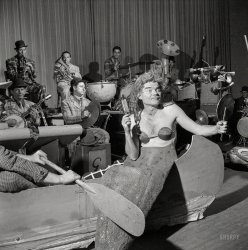
- Desperado: 1941
- ...
Very nice inventory, I am partial to the pearl handled 1911.
General Patton would not approve ... of pearl grips on a cap gun. ... Posted by Dave - 09/13/2020 - 12:15pm -
![Desperado: 1941 July 1941. "Store with cap guns and fireworks for sale, Fourth of July, Vale, Oregon." 35mm acetate negative by Russell Lee for the Farm Security Administration. View full size.
Regrets"If only I hadn't spent all my money on licorice twists!"
I give upWhat in the world is on the front of this young man?
[A dog. - Dave]
Cap RollsThe "ammo" for a cap gun is a roll of red paper with small amounts of explosive powder. The smell of the smoke emitted along with the shot was part of the experience.
"A dog"A plaster dog, at that. I bet his mother just loved it! Well, at least it didn't need to be housebroken.
HubleyA first-rate brand. Ask the kid who owned one.
Very nice inventory, I am partial to the pearl handled 1911.
General Patton would not approve ... of pearl grips on a cap gun. And while I like a good Hubley, I'm a Fanner 50 man.
(The Gallery, July 4, Kids, Russell Lee, Stores & Markets)](https://www.shorpy.com/files/images/SHORPY-8a30286a.thumbnail.jpg)
- Wayne Avenue: 1908
- ... #53 trolley up stately Wayne Ave.
In just 3 years, in 1911, the riding public along Wayne Avenue should begin to be riding on the ... Posted by Dave - 10/02/2014 - 1:37pm -
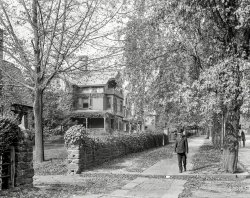
- Opening Day: 1908
- ... same team would go on to win the World Series in 1910, 1911 and 1913.
I'm sure I'm not the first Phila A's fan to point out that ... Posted by Dave - 05/05/2008 - 12:08pm -
![Opening Day: 1908 Opening Day at Hilltop Park, April 14, 1908. New York Highlanders and Philadelphia Athletics. View full size. George Grantham Bain Collection.
Philadelphia AmericansLegend on Photo says Phila. Americans, instead of Athletics.
[Philadelphia Americans is short for Philadelphia American League team. As opposed to the Philadelphia Nationals. - Dave]
Hilltop ParkSome photos of Hilltop Park can be seen here. Seems it existed as a ballpark and a home for the Highlanders/Yankees for just over ten years; it was demolished in 1914.
Denny Gill
Chugiak, Alaska
Chief Bender et alHey! I think that's Chief Bender (1st Athletic in from the right; dark hats) Also on the A's that year? Eddie Plank and Frank "Home Run" Baker, all Hall of Famers. They finished 6th in the AL that year actually ahead of their arch rivals, the Highlanders (Yankees). Mostly this same team would go on to win the World Series in 1910, 1911 and 1913.
I'm sure I'm not the first Phila A's fan to point out that 11 years later, the 1929 A's won the pennant AND the world series by beating the Yankee's famous murderer's row. That year's AL pennant race had 14 Hall of Famers between the #1 and #2 teams, including both managers, Mack and Huggins. Must have been a chilly April 14 as they all have their jackets on.
(The Gallery, G.G. Bain, Sports)](https://www.shorpy.com/files/images/00275u.thumbnail.jpg)
- Mary G. Powers: 1903
- ... 1891 Sheffeyid out of Gloucester, Mass as listed in the 1911 Annual List of Merchant Vessels of the United States.
(The Gallery, ... Posted by Dave - 08/04/2015 - 7:59am -
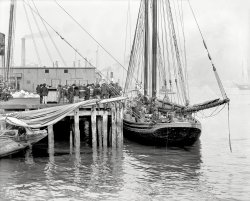
- How to Be Cool: 1912
- ... this was the "dead ball" era). He played for Chicago in 1911 and 1912 which dates the picture. He died in 1920 at the age of 40.
... Posted by Dave - 09/08/2011 - 1:30pm -
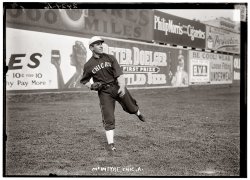
- Dark or Light?
- Two Thanksgiving maskers circa 1911. View full size. 5x7 glass negative, George Grantham Bain Collection. ... Posted by Dave - 09/08/2011 - 9:09pm -
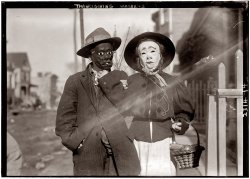
- Overhill St. School: 1892
- ... Street School" as an elementary school that closed in 1911,in Louisville. Some further searches indicate that the school was replaced in 1911 by the Broadway School.
Thanks Harold! Thanks for the info!
... Posted by Retrophile - 12/07/2012 - 8:35pm -
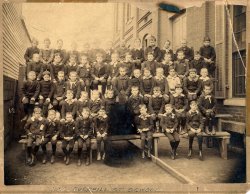
- Bathhouse Row: 1910
- ... -- the oldest bathhouse still standing is the Maurice from 1911, which doesn't appear in this photo. Most of these pictured wood framed ... Posted by Dave - 08/15/2012 - 3:07pm -
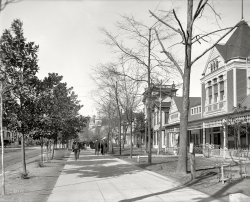
- Semmes City: 1926
- ... one of six children, to Christopher Columbus Semmes (1844-1911) and Symphronia Coombs Bryan (1847-1918).
The 1910 Census lists ... manager of a garage. He married Mary McClearon (b 1895) in 1911; their first child, Mary Jane, was born in 1914.
By 1930 Raphael is ... Posted by Dave - 06/22/2018 - 11:28am -
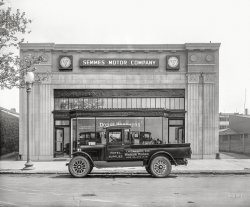
- Johnny Evers: 1910
- ... were used for the "gold border" baseball cards issued in 1911 by American Tobacco. Even better, more than two dozen of the original ... Posted by Dave - 07/29/2012 - 7:11pm -
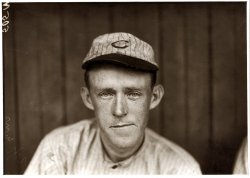
- A Tattered Tire: 1922
- ... located. The appearance of this building, erected in 1911, has been altered according to the Auto Row Survey.
The Auto Row ... Posted by Dave - 11/28/2014 - 12:23am -
![A Tattered Tire: 1922 Circa 1922 in San Francisco, this aging Chalmers touring car needs a new shoe. Since we're at the Maxwell-Chalmers dealer, why not take a look at the new models? 6½ x 8½ glass plate from the Wyland Stanley collection. View full size.
Maxwell is still with usMaxwell-Chalmers was having a roller-coaster year in '22, sales had been growing fast but bad word-of-mouth from some less than rigorous engineering, cash flow issues from the Chalmers merger, and the '21 recession all worked together to put the company in deep doo-doo.
Thankfully the board recruited a first-rate Automotive guy to turn things around, Walter Chrysler took most of his pay in stock options and had the finances solid enough inside a year that he could launch a new line with his name on it.
Hurry it up, boysLet the men replace the tire; she's got places to go!
Rose and fellThe 1922 Crocker-Langley city directory lists exactly one dealer for Maxwell & Chalmers autos, the Lou H. Rose showroom at 1230 Van Ness.
The printing of this directory must have taken place shortly before the ill-fated merger of the Maxwell & Chalmers companies. Perhaps Lou Rose could see the end coming, because the 1923 directory contains no entry for Rose's showroom or any other Maxwell dealer.
Also, the survey of Van Ness Auto Row buildings makes no mention of Rose or 1230 Van Ness.
This touring cardates from about 1913. Chalmers, located in Detroit, made quality cars from 1908 to 1923. Pictured below is a restored 1913 touring as well as a 1922 ad similar to the one in the dealer’s window.
Would you guys get on with it!The expression on the face of the lady in the driver's seat says it all.
Right hand driveWhy is this vehicle right hand drive? Didn't they change from RHD to LHD in California in the 'teens? Maybe it was a pre-change over model car?
[It's a circa 1913 model. Cars of the era were a mix of right- and left-hand-drive. By 1920, most auto makers had settled on left-hand drive. - Dave]
A Rose By Any Other NameRose's automobile business remained at the same location in 1923. In the 1923 Crocker-Langley City Directory the business is simply listed as "Campe-Rose Co 1230 Van Ness Av" without a marque name. The next year Rose's name is missing from the listing with the business shown as "Campe Geo 1230 Van Ness Av" in the city directory under the heading "Automobiles."
Prior to the Chalmers Dealership the address was occupied by Steven G. Chapman's automobile business in 1914, and an Oakland franchise in 1915. The Chalmers dealership is listed there from 1916 - 1922.
Although the Chrysler dealership in San Francisco is shown on Market Street in 1925, in 1926 it is at 1200 Van Ness, in the same block where Rose's business was previously located. The appearance of this building, erected in 1911, has been altered according to the Auto Row Survey.
The Auto Row survey's purpose was to list the surviving automobile related structures that are present in the survey study area. I believe the survey fails to mention the 1230 Van Ness address because either the building that was there in 1922 had been torn down or the address was incorporated into an existing structure along the street and the address is no longer used. Looking on Google Maps there are now only two buildings in the 1200 block of Van Ness on the even numbered side of the street.
(The Gallery, Cars, Trucks, Buses, San Francisco, W. Stanley)](https://www.shorpy.com/files/images/SHORPY-147-01A.thumbnail.jpg)
- Liberty Bonds: 1918
- ... have looked like before the Triangle Shirtwaist fire in 1911, with the consequent workplace safety laws.
Can't seem to do it ... Posted by Dave - 03/26/2020 - 1:14pm -
![Liberty Bonds: 1918 Washington, D.C., 1918. "Liberty Loan bonds -- Bureau of Engraving and Printing." Financing the war effort. 8x10 inch glass negative, Harris & Ewing Collection. View full size.
Visual AidTo see what all that activity is about, here's an example of a Liberty Loan bond from WWI, courtesy of Heritage Auctions.
Railroad Engineering/Signal Dept. Test?As a retired railroad special agent, experience makes me wonder if the railroad is conducting tests to determine whether or not a human body laying across track will have any effect upon railroad block signals. Possibly railroad defense attempt involving a litigated suicide incident? Nothing conclusive here, however several items of note, such as the particular track location where there appears to be permanently mounted trackside electrical apparatus from which Dave pointed out an electrical conduit which appears to connect such apparatus to the track at an insulated track joint. Also, it appears to me to be an attempt by the man who is obviously contacting both rails with his body, however making a very deliberate attempt to electrically insulate such bodily connection by his "dress shoes" on the one rail, and his jacket collar pulled up under his head to insulate where his head and neck is resting on the opposite rail. None of the three men appear to be dressed as train crew members, but more like RR Engineering Dept. members, and the man laying across the track wearing (as previously pointed out) "dress shoes", but would naturally (except for dress shoes) put on old clothing he did not care about for repeated laying down across track for testing procedures. Mostly conjecture here, but that's how it looks to me.
[Pro tip: If you can't see the train, try crossing your eyes. - Dave]
Neat and TidyNo errant bits of paper, no piles of discard. I wonder what it would have looked like before the Triangle Shirtwaist fire in 1911, with the consequent workplace safety laws.
Can't seem to do itNo matter how hard I try, can't see the train. Am I the only one?
Gullible me!I actually followed your suggestion, Dave. Then I went to the next picture.
I see the train!Just above the snipe.
(The Gallery, D.C., Harris + Ewing, The Office, WWI)](https://www.shorpy.com/files/images/SHORPY-14032a.thumbnail.jpg)
- Daydream: 1905
- ... in the photo) did. The dreams of Dreamland died in the 1911 fire and the park was never rebuilt.
Meet me tonight in Dreamland ... Posted by Dave - 10/28/2020 - 2:47pm -
![Daydream: 1905 New York circa 1905. "Dreamland Park and tower, Coney Island." 8x10 inch dry plate glass negative, Detroit Photographic Company. View full size.
Preview Of Coming AttractionsThe attraction partially seen in the far right of the photo was particularly popular at Dreamland. In a world made up still in 1905 by millions of wood and veneered buildings, fire was an everyday danger and occurrence and, let's be honest ... entertainment for the public as well. So what better to draw them in than an attraction featuring thousands of firefighters battling a new inferno every 20 minutes? Ironically, Fighting the Flames exhibit wasn't what did in Dreamland, but a hot bucket of pitch left in the appropriately named Hell Gate attraction (which is screen left in the photo) did. The dreams of Dreamland died in the 1911 fire and the park was never rebuilt.
Meet me tonight in DreamlandOne of the most mesmerizing documentaries I have ever seen is the American Experience episode on Coney Island. It first aired in 1991 but if you can find it to watch, watch it. I've seen it several times over the years and it never fails to deliver that feeling of actually stepping back in time. Truly haunting ... in a good, if slightly creepy, way.
Moxie Sighting... bottom right. Just wanted to mention it. Great photo!
Hats, hats, hats!I looked long and hard, and there is not a single bare-headed person in this picture!
Panchromatic emulsion?There is much more texture and contrast in the image than in other posts from this period, particularly some sky detail. Was it from a panchromatic emulsion?
[The sky is courtesy of Photoshop's Shadows & Highlights filter. - Dave]
(The Gallery, DPC, NYC)](https://www.shorpy.com/files/images/SHORPY-4a17572a.thumbnail.jpg)
- Central Furnace Works: 1908
- ...
The smaller furnace to the south was built in 1911. The plant was shut down in September 1978 in part due to EPA issues and ... Posted by Dave - 10/12/2012 - 5:52pm -
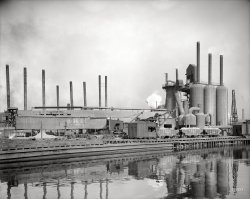
- Washington Noir: 1926
- ... the camera) was designed by Henry J. Hardenbergh. Built in 1911 and demolished in 1964, it must have been caught up in the JFK-initiated ... Posted by Dave - 07/17/2012 - 10:14pm -
